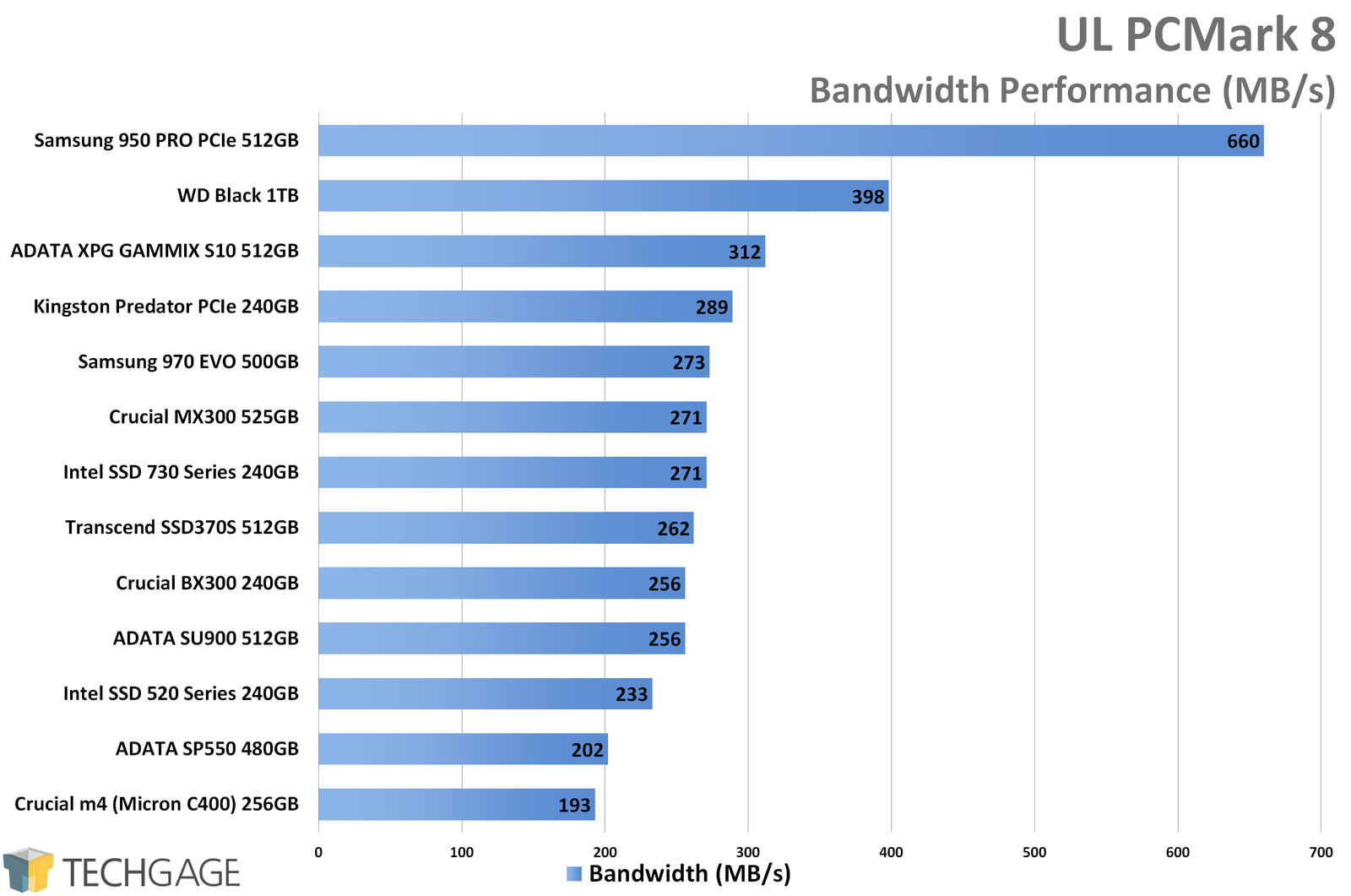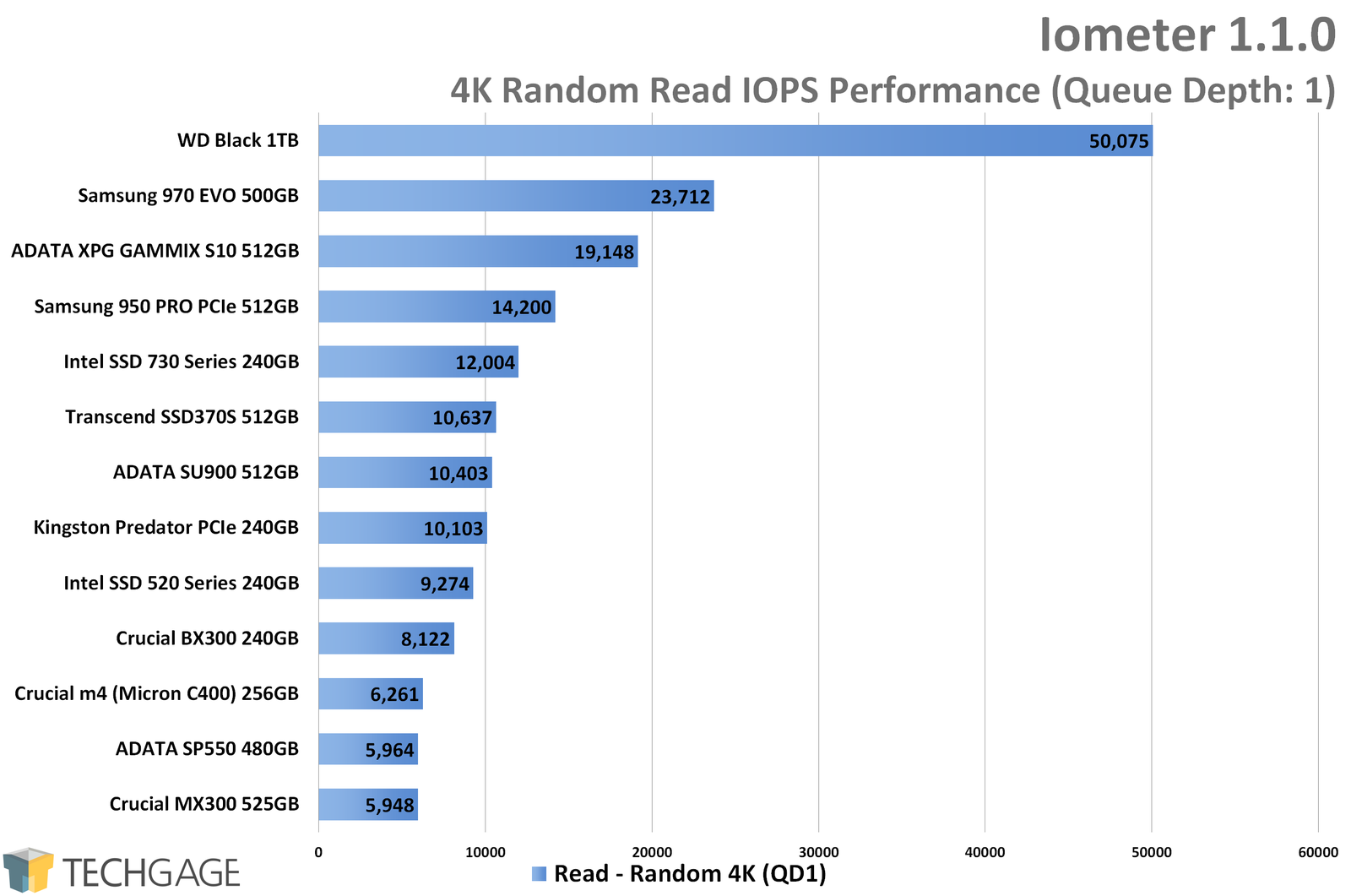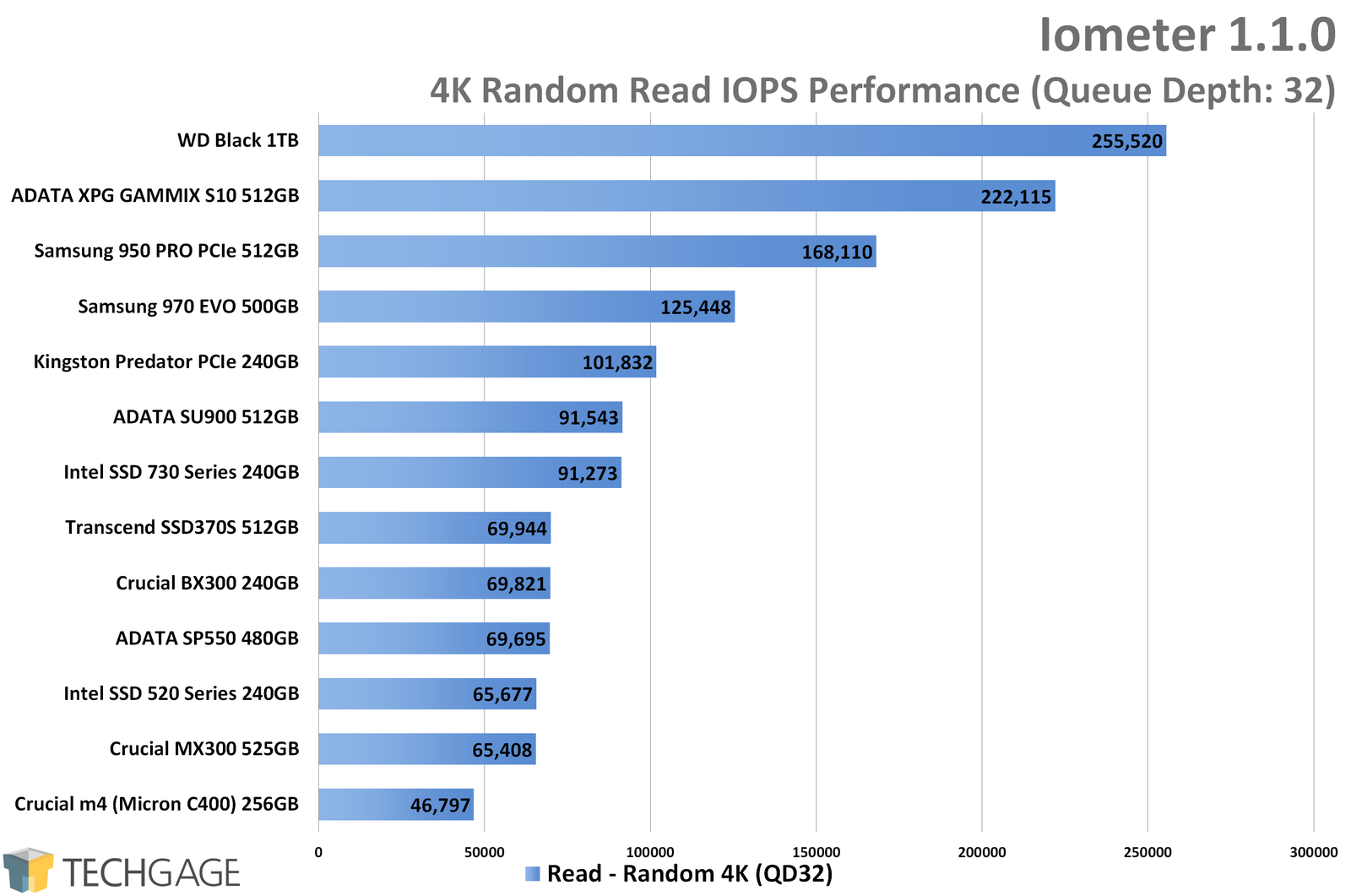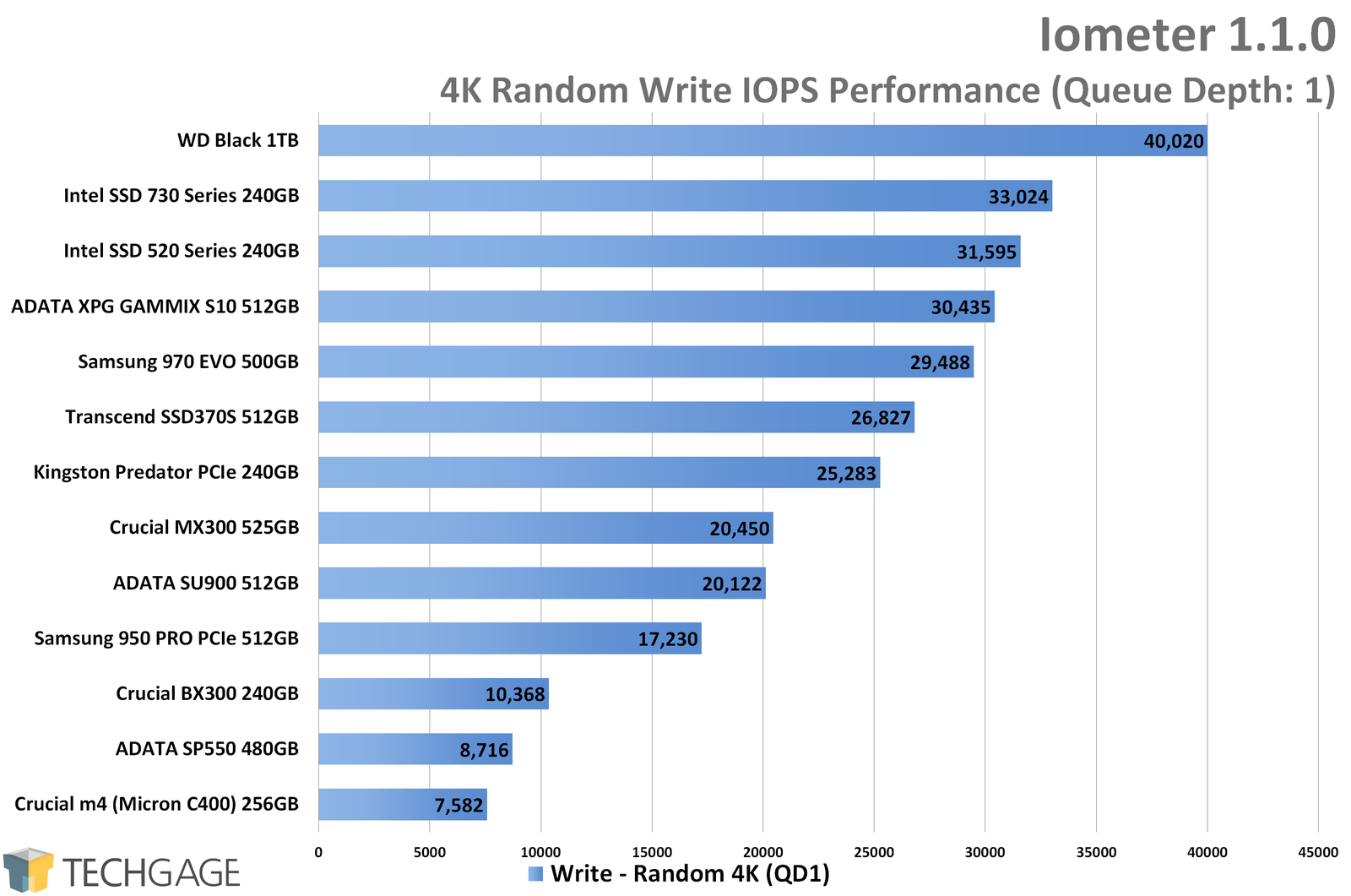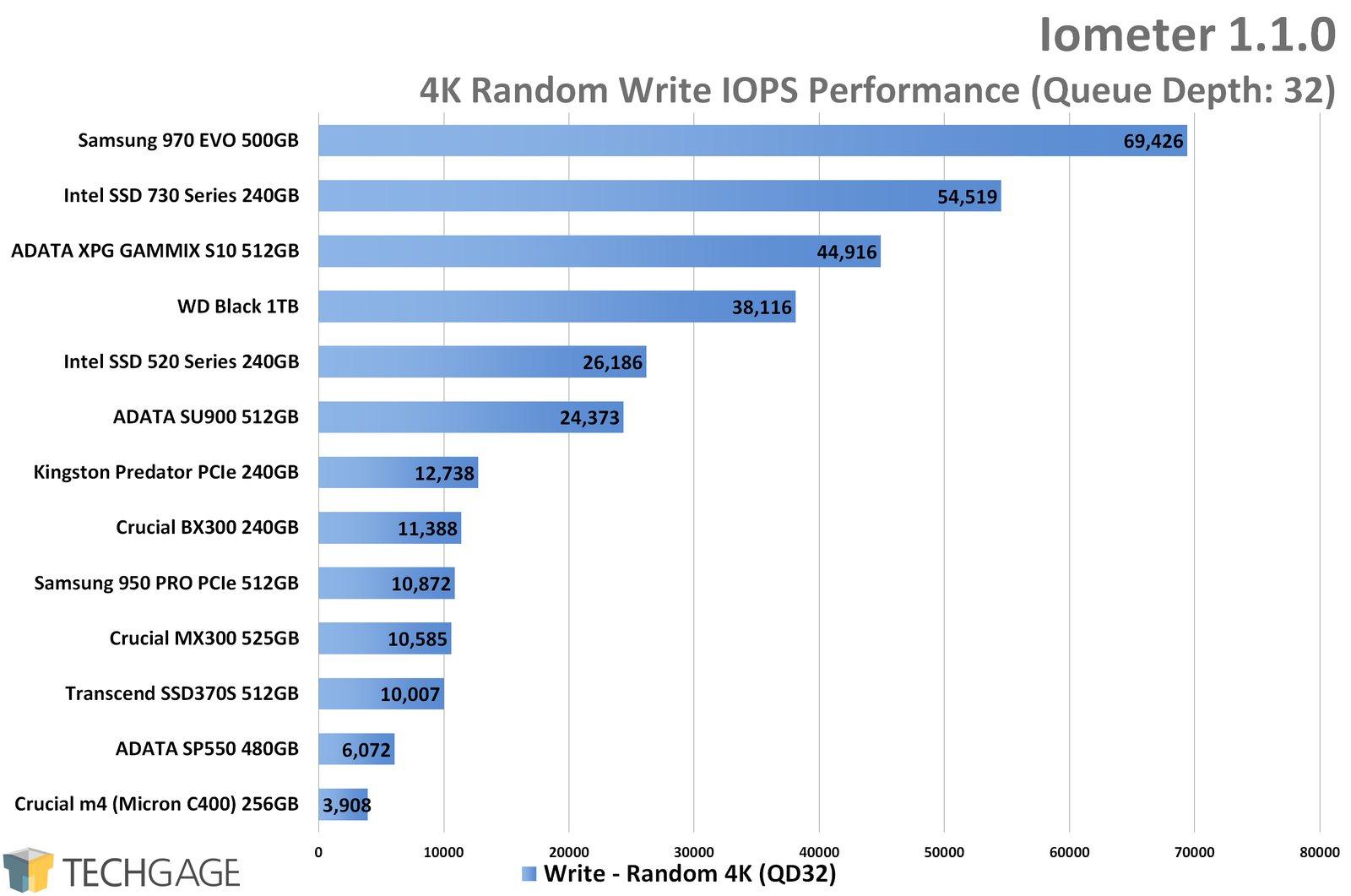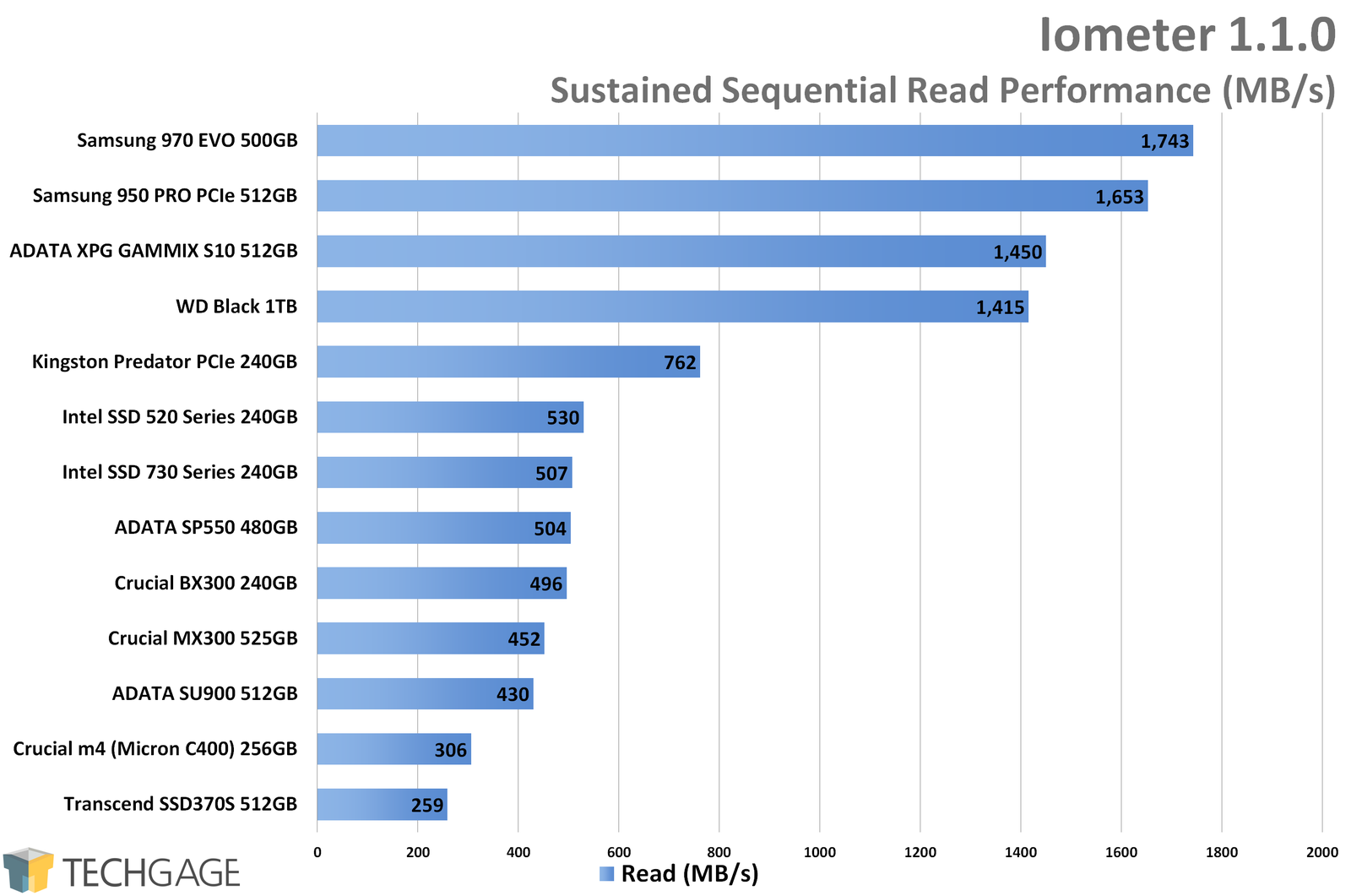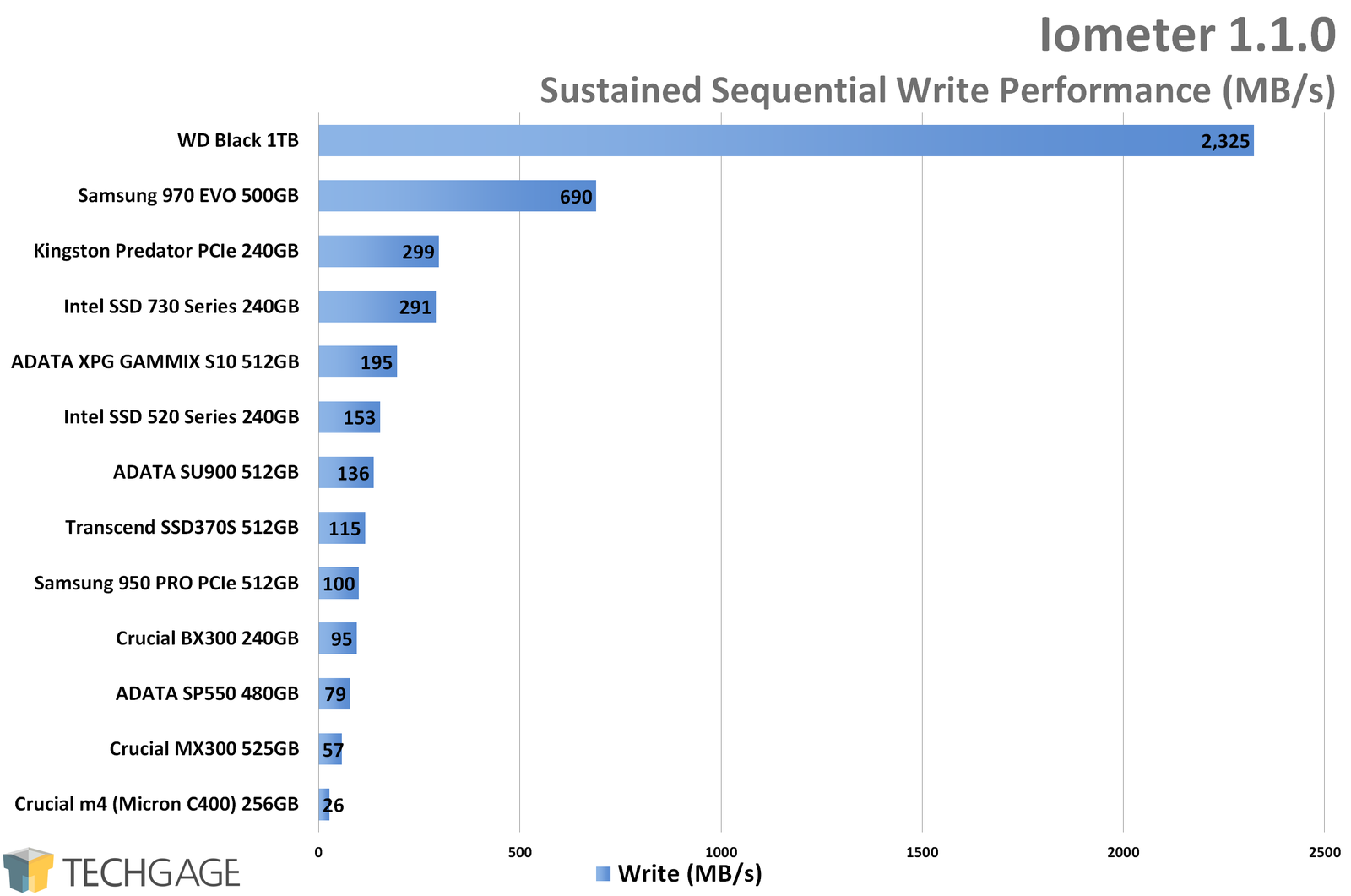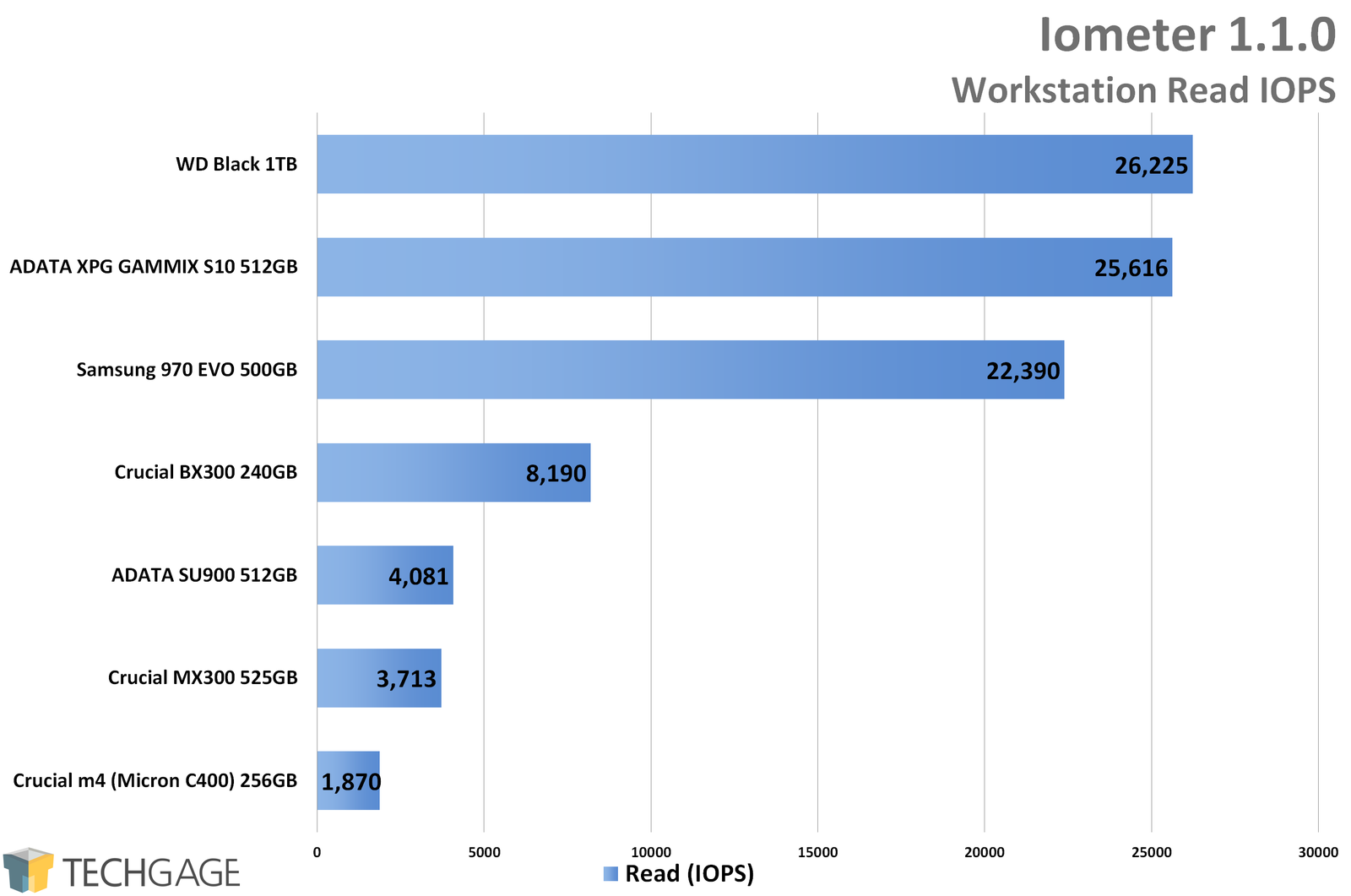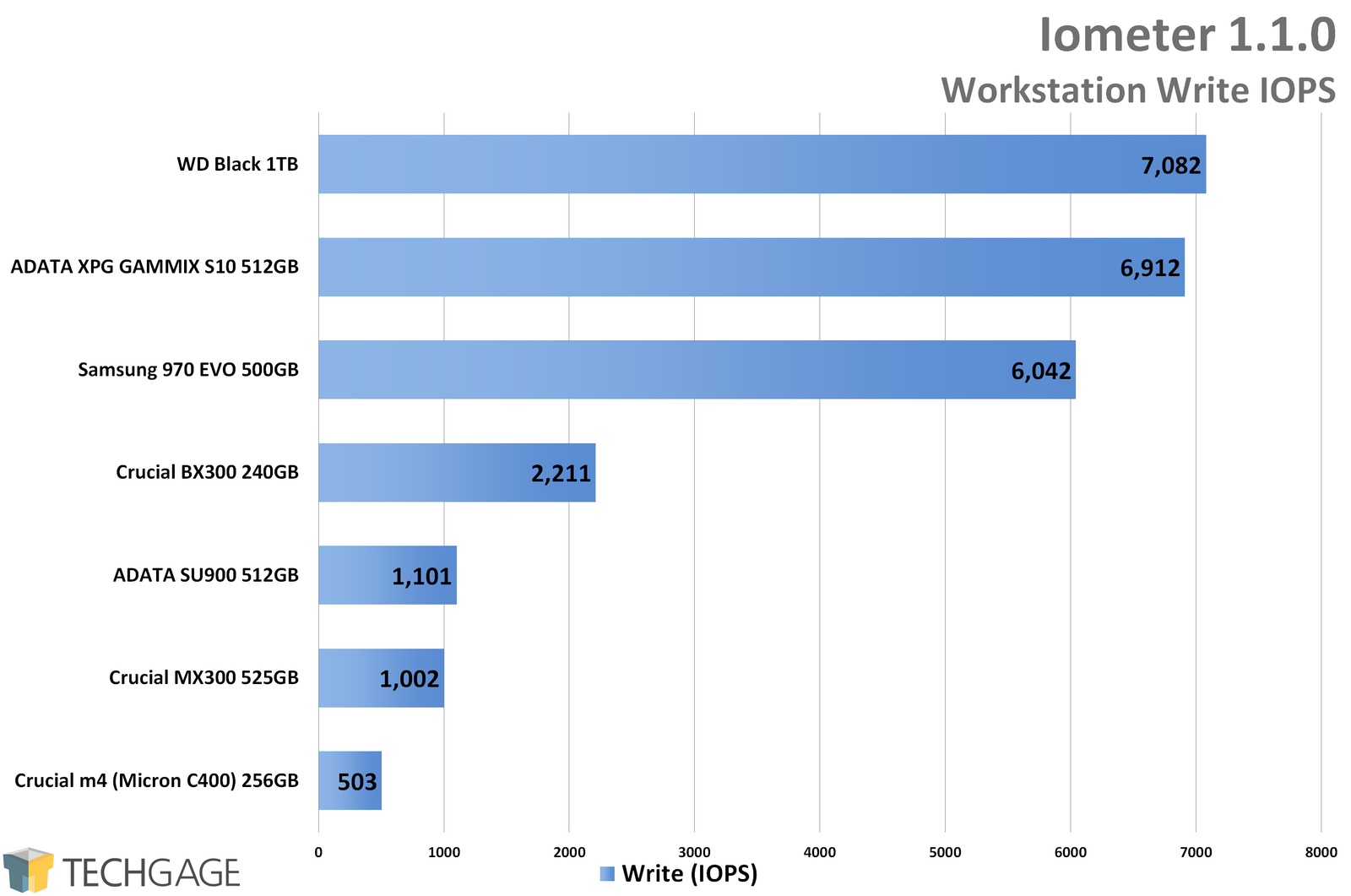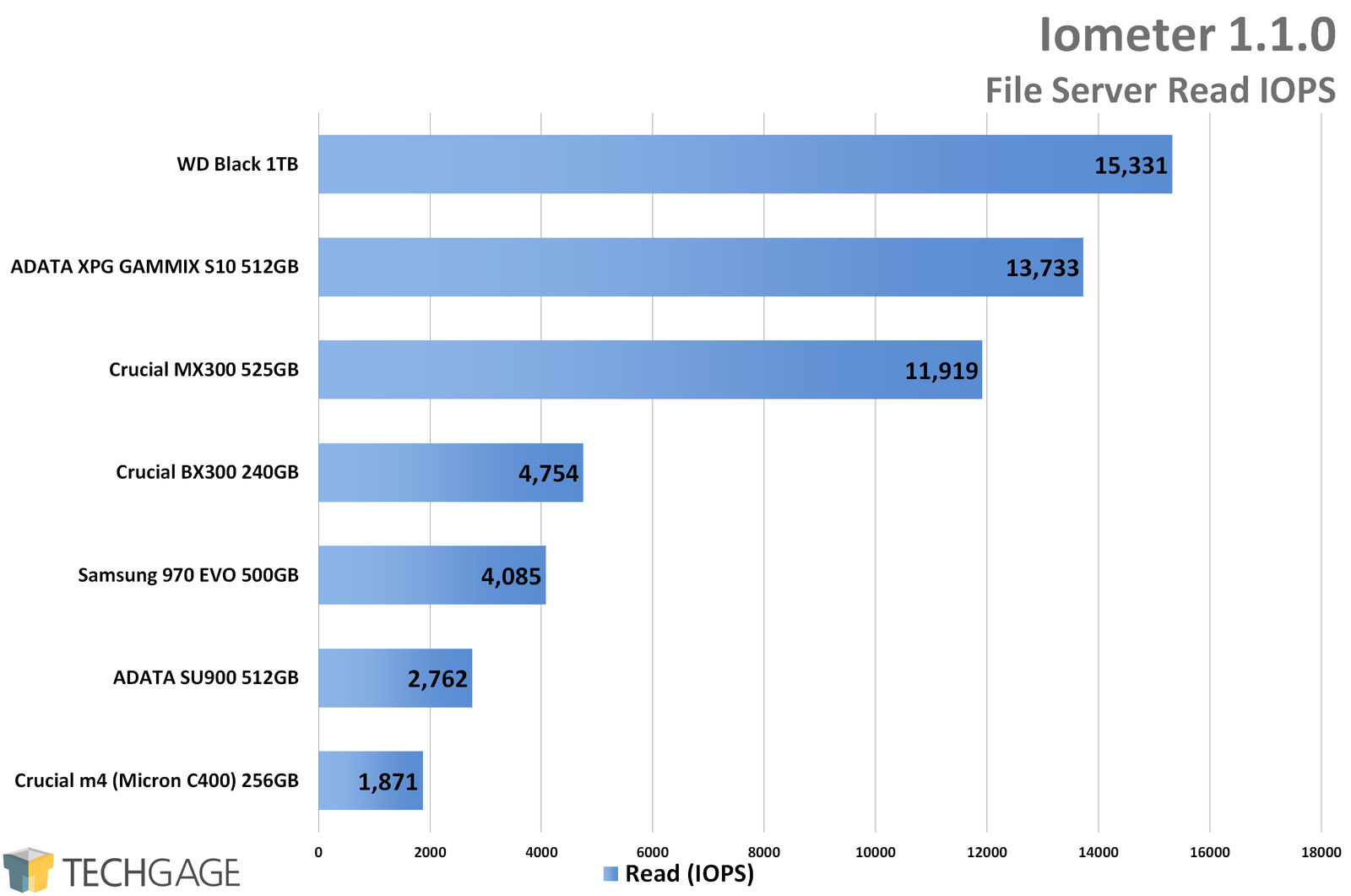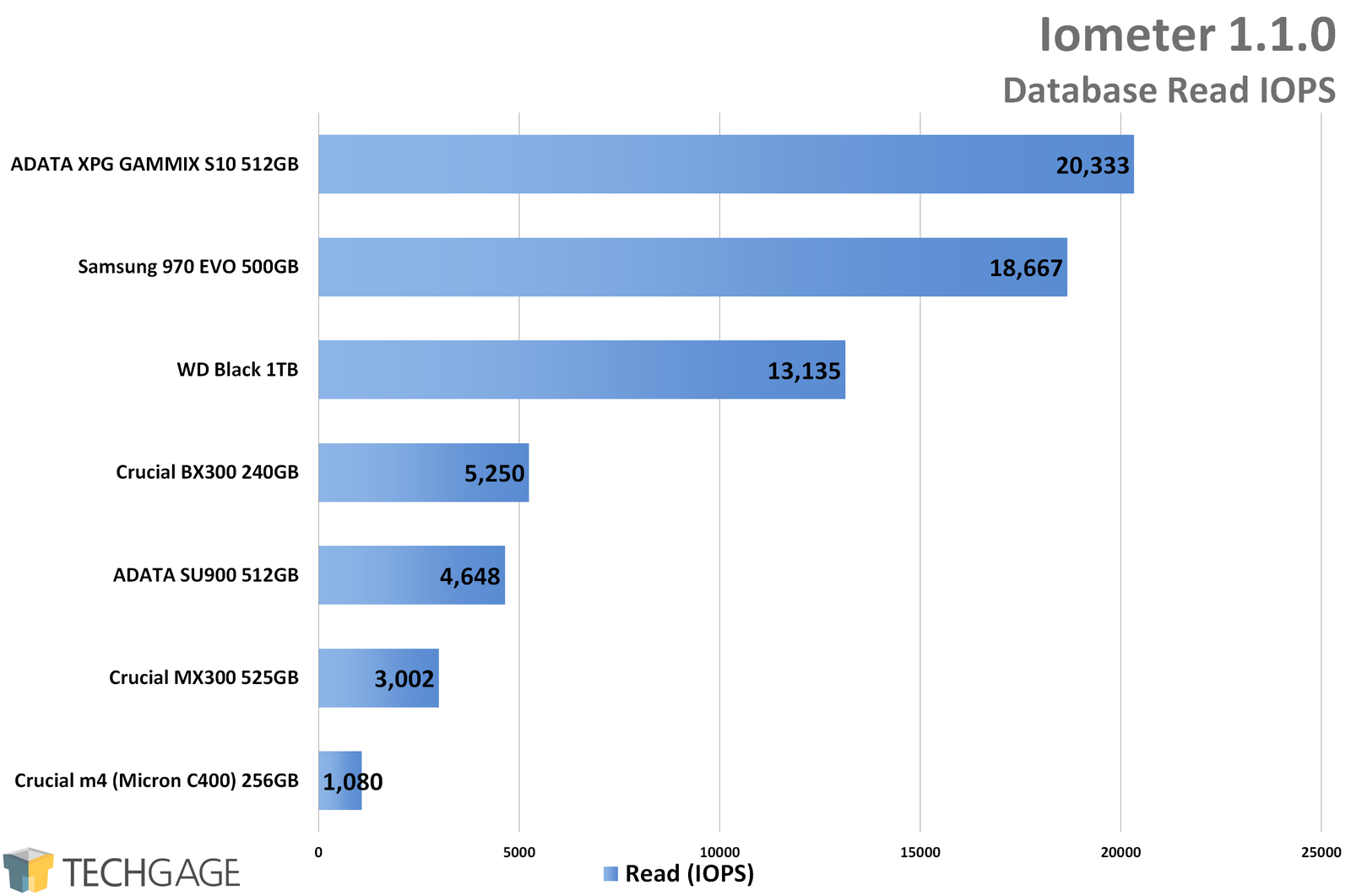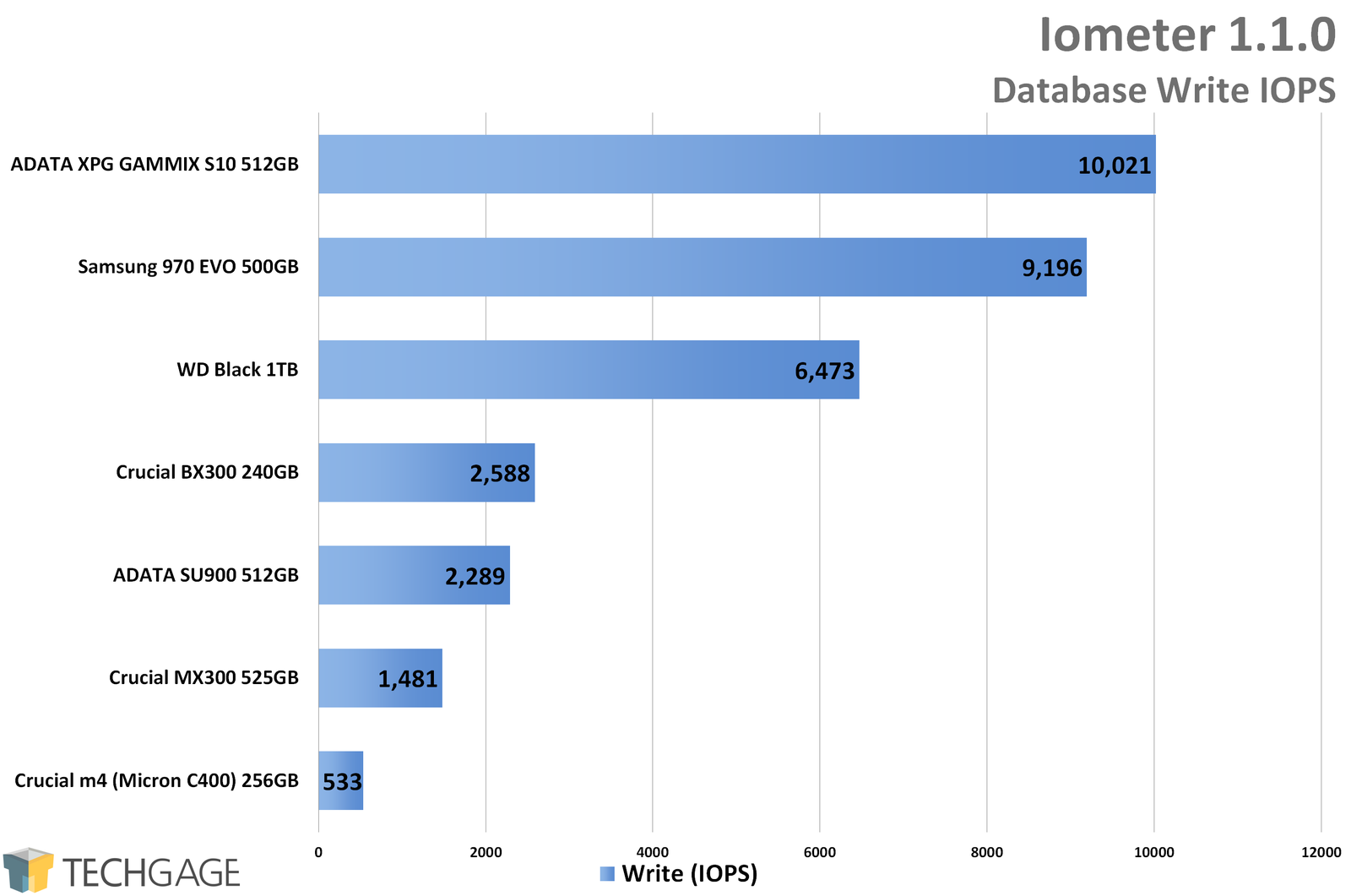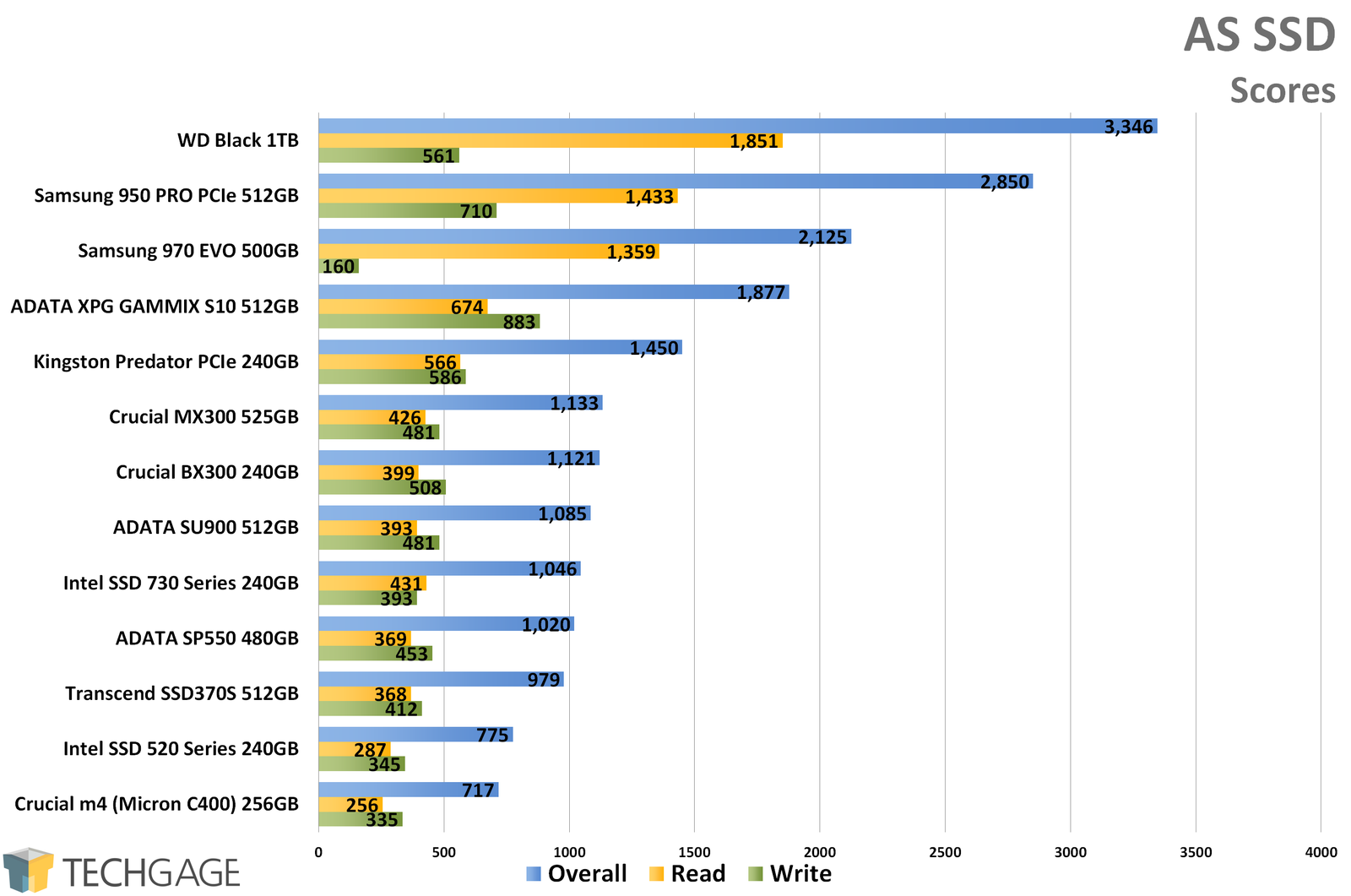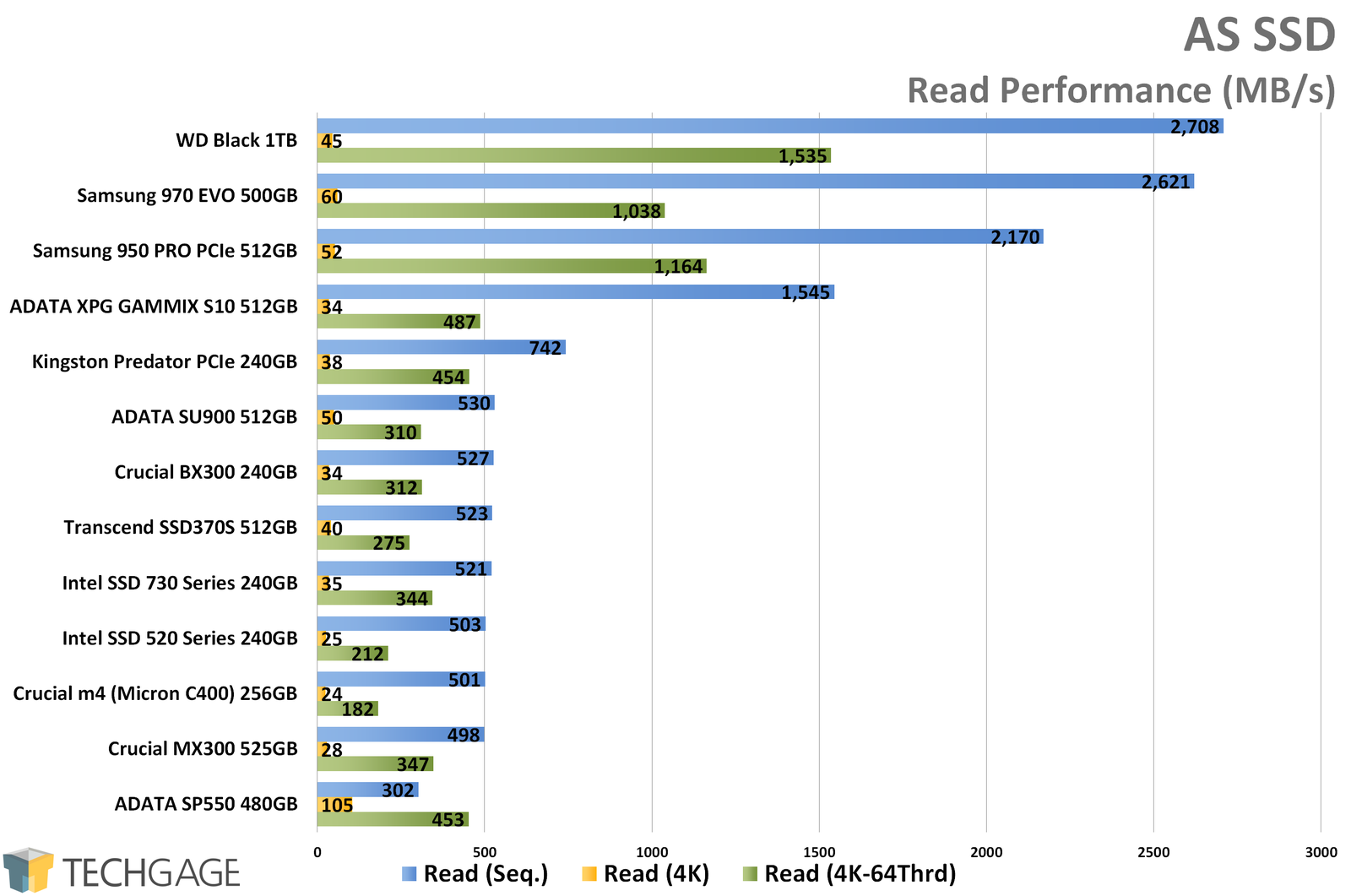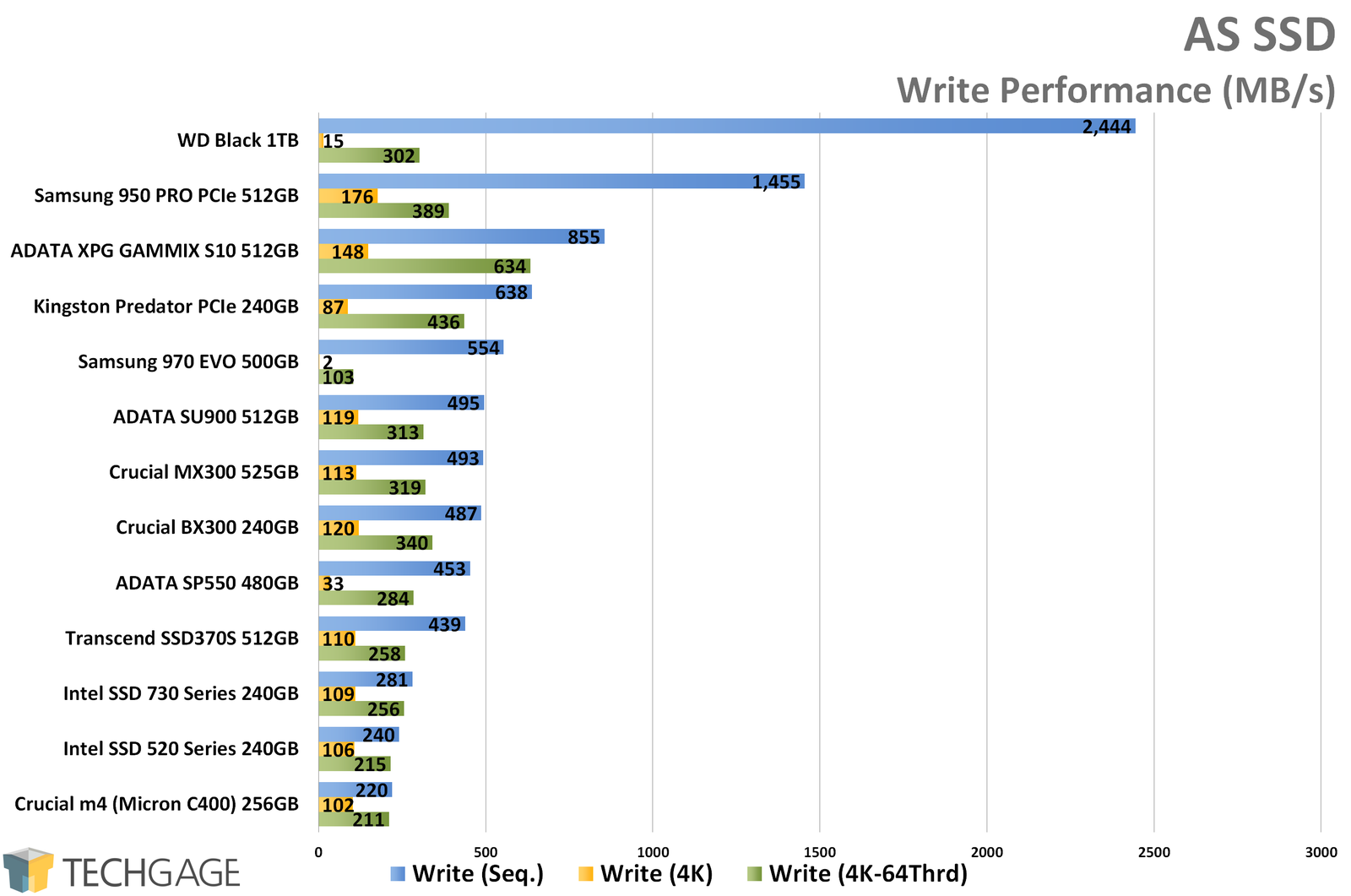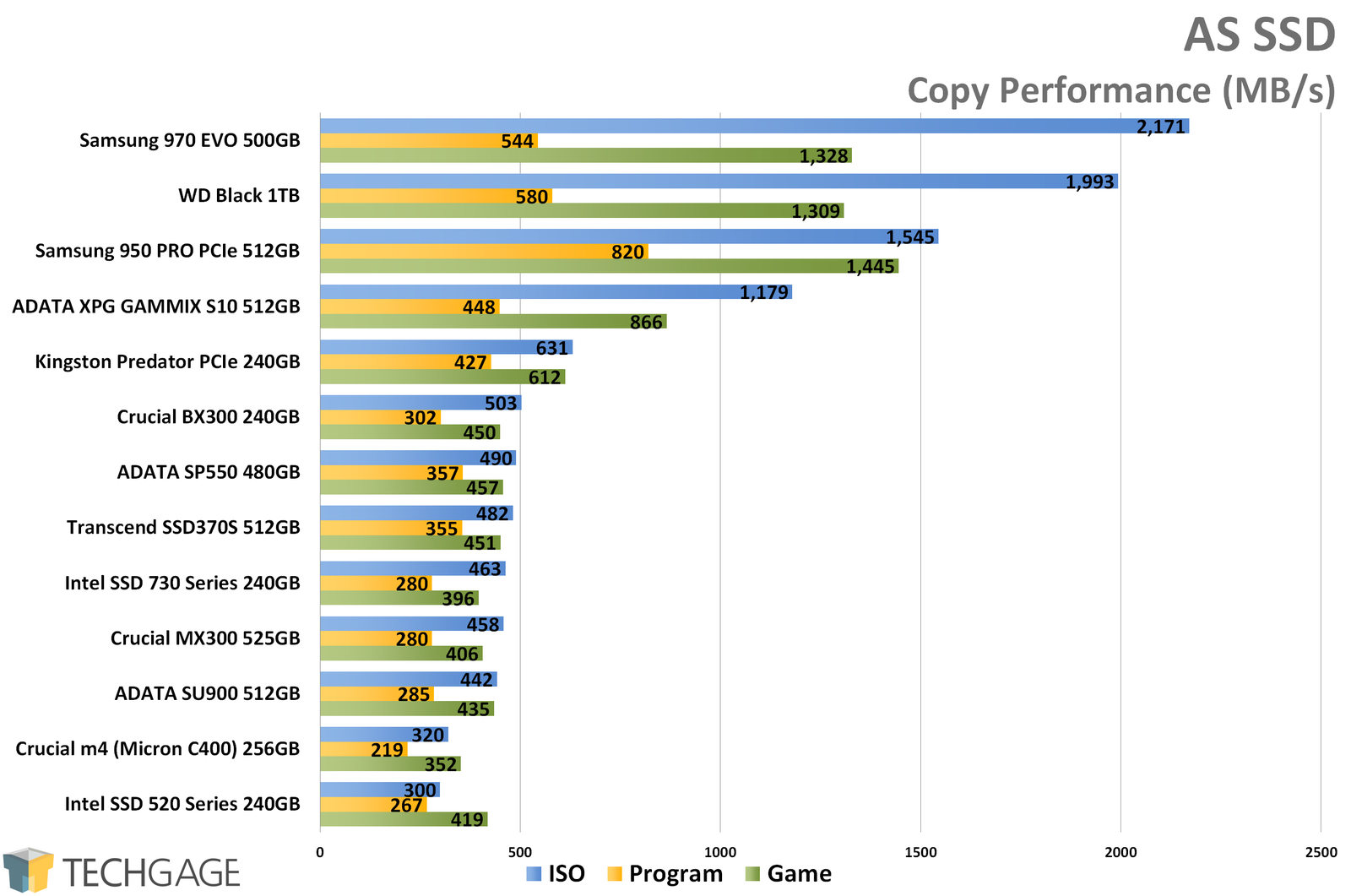- Qualcomm Launches Snapdragon 4 Gen 2 Mobile Platform
- AMD Launches Ryzen PRO 7000 Series Mobile & Desktop Platform
- Intel Launches Sleek Single-Slot Arc Pro A60 Workstation Graphics Card
- NVIDIA Announces Latest Ada Lovelace Additions: GeForce RTX 4060 Ti & RTX 4060
- Maxon Redshift With AMD Radeon GPU Rendering Support Now Available
A New Challenger: Western Digital Black 1TB NVMe M.2 SSD Review

It’s taken some time for Western Digital to hit the consumer side of the SSD market hard, but momentum is growing fast – and for good reason. The company is now producing its own in-house controller, and based on our in-depth testing of the WD Black 1TB NVMe, we’re excited to see where things are going.
Page 2 – Test Suite, PC Mark, Iometer & AS SSD
Benchmark Programs
Futuremark PCMark 08: Normal settings are used, including the default setting of three runs. This gives us an extended test that takes roughly 45 minutes to complete, resulting in a sustained load that will thermally challenge drives. The free (demo) version is available on Steam for general use.
AS SSD: This handy little utility was custom-written for solid-state drives. We selected this program as by default it utilizes incompressible data and bypasses the Windows cache. This is another free program anyone can use to quickly test or verify normal performance of an SSD, available here.
ATTO: The bar graphs generated by this utility provide a huge amount of data in a condensed format. It is extremely handy for detecting problematic file sizes, performance bottlenecks, or simply inconsistent performance that can be hidden when viewing final performance averages. Though this is significantly less of a problem today as solid-state drives have matured, it remains an essential performance verification tool of any benchmark kit.
RoboCopy: This is Windows’ command-line utility included in most versions of Windows and provides for features beyond the default file copy handling of Windows Explorer. More information is available here. Windows Defender is also disabled to prevent bottlenecking the folder copy. We utilize a 9.81GB movie file, and separately a 1.6GB folder with 11,511 files across 449 subfolders, and measure the performance to copying the data to and from a RAMdrive.
RAMdrive: Primo Software’s Ramdisk utility is a handy, convenient way to create a 12GB direct-IO ramdisk – meaning no indexing or caching is utilized, and it removes any bottlenecks associated with utilizing another storage device. File performance of the RAMdrive varies by I/O size, but exceeds 6GB/s above 16KB IOPS with an overall peak of 12GB/s.
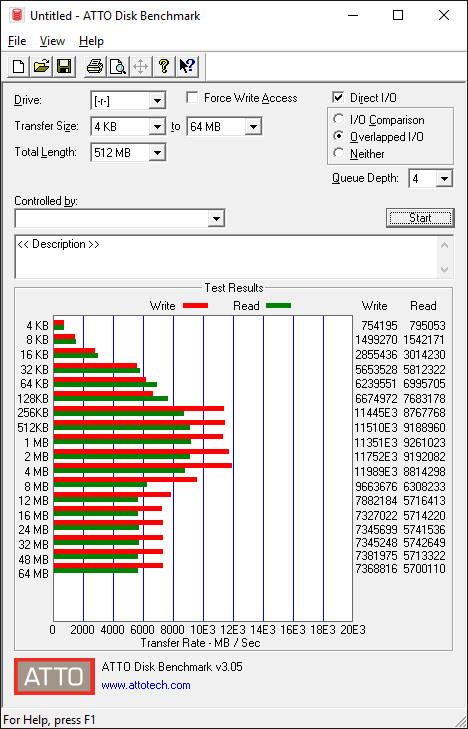
dBpoweramp R15.3: We transcode 500 FLAC encoded music files (14.4GB) into .M4A with the Apple Lossless Audio Codec (ALAC) for playback on Apple devices. As no lossy compression is taking place, this minimizes the CPU workload while maximizing the amount of data written to the destination drive. Unfortunately, this test is bottlenecked by our quad-core processor and would show more variance in results for systems with greater than four cores as dBpoweramp can fully load almost any size processor.
Iometer – The most powerful piece of storage testing software freely available, Iometer allows the creation of practically any kind of test workload. We first utilize it to dirty every new SSD before we test the four basics of every solid-state drive. We measure random 4K read and writes at 1QD and 32QD, as well as 2MB sequential read and writes with a queue depth of one. Each one of the six tests is run with a ten minute duration.
Additionally, we have added Database, File Server, and Workstation scenarios back into our regular testing. We have updated and modified the original three workload scenarios to bring them more in line with changes in workloads, access patterns, and disk IO sizes. These results are not comparable to the test scripts originally created and included with Iometer nearly two decades ago.
All Iometer testing is done on a “raw”, unformatted drive allowing the program to span the entire drive capacity during the benchmarking. While this allows us to see the raw performance of the NAND, ten minute saturation workloads are not even close to representative of the sort of work typical consumer drives would see in normal everyday use.
SPECworkstation 3 – This program utilizes many real-world workstation applications to test the full range of a system’s capabilities, although we specifically focus on just the disk I/O subsystem. The SPECworkstation 3 benchmark is freely available to the public, and we have found the results to be extremely reliable, making it an excellent addition to our test regimen. This program requires a minimum 300GB of free space for testing.
Footnote – Disk I/O Tracing
If you are still reading our benchmark profile, thank you! It is not easy to devise tests that can tax a modern solid-state drive, so if you have any suggestions or perhaps know of any applicable software that you would like to see added to our test regimen, please let us know. We are especially eager to add disk I/O trace recording and playback to replace the batch file testing we utilized in past storage reviews. We are still looking into how to make this possible, so if you know of a piece of software that doesn’t cost a few grand please drop us a note!
Futuremark PCMark 8
PCMark 8’s long test regimen usually fills up the fast-write cache of solid-state drives, but the WD Black’s 398MB/s bandwidth rating makes it the fastest SSD to date that utilizes a fast-write cache, and the second fastest result in the entire lineup of drives. It is no coincidence the three highest bandwidth scoring drives here are NVMe capable M.2 models that are not bottlenecked by the SATA interface.
Iometer 2010 1.1.0
Iometer can benchmark drives in the raw, unformatted state, allowing it to write data to the full capacity of the drive as well as bypassing any Window caching. Naturally, this means the SLC fast-write caching advantage of most drives also becomes quickly filled during the extended benchmarking process.
Despite that, the Western Digital Black somehow pulls out remarkable results here, taking the top spot in three out of the four 4K IOPS tests. It is likely WD’s nCache was finally exhausted by the 4K 32 queue depth test, otherwise given its strong QD1 performance, it is highly likely to have taken the top spot to make a clean sweep.
The eight-year-old Crucial m4 SSD does not have an SLC fast-cache, and even back in its heyday did not have strong random IOPS performance. We leave it included in our tests to showcase just how far modern solid-state drives have come, and that users on some of the early generations of SSDs would see tangible benefits to upgrading to a modern SATA solid-state drive, even if the system in question does not specifically support the newer NVMe M.2 drives.
The four corners of SSD performance are 4K Random reads & writes, and sequential reads & writes. For sequential performance the 1TB Black takes fourth spot in reads, but for writes manages an eye-popping 2,325MB/s, which is more than three times the next best result. To save some scrolling, the official sequential write rating of the 1TB Black is 2,800MB/s making this result pretty close to the drive’s rated maximum.
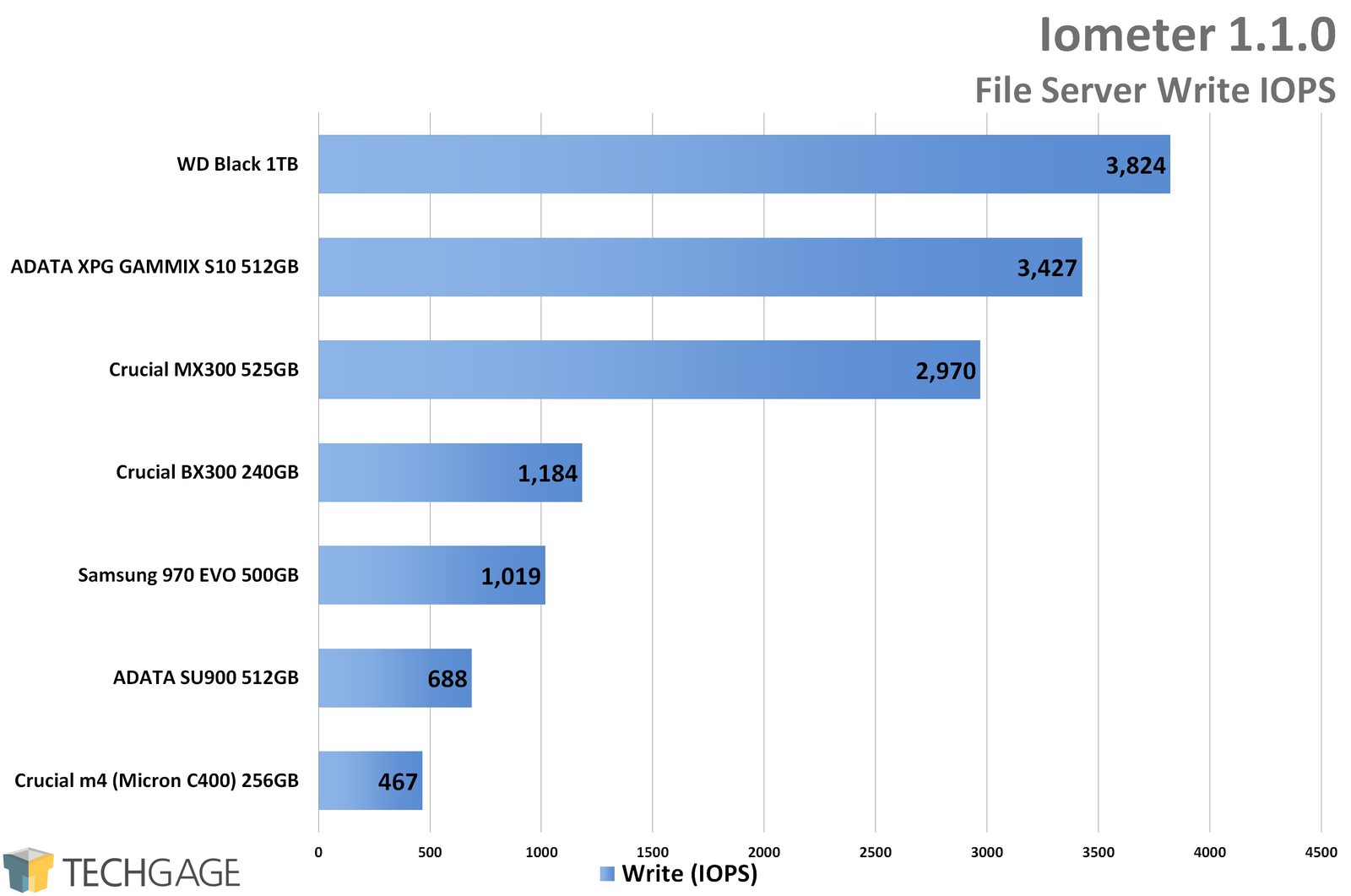
Due to the dearth of consumer programs that will stress modern SSDs we have recreated the original Iometer usage scenarios with some modern, updated settings. Admittedly, our new Iometer scenarios are more appropriate for enterprise and data-center SSDs, but they do a good job of showcasing how well each drive can deal with heavy, sustained workstation workloads.
These tests are a worst-case scenario intended to highlight the underlying differences between solid-state drives that are well-hidden by new technologies such as fast-write SLC caching. Each of the three scenarios runs for twenty minutes each with only minimal time given between runs for the SSD to perform maintenance tasks like garbage cleanup or clearing any SLC fast-caches (if applicable).
One thing becomes immediately clear, and that is Western Digital’s Black performance SSD loves Iometer. The 1TB Black easily takes top spot in four out of the six test scenarios, delivering top IOPS even after a grueling cache-filled marathon. It is possible SanDisk’s enterprise SSD expertise may be showing here, as overall the WD Black 1TB walks away with the numero uno spot in no less than eight out of twelve of our Iometer benchmarks.
AS SSD
| AS SSD – Latencies | Read | Write |
| ADATA GAMMIX S10 (512GB) | 0.040ms | 0.024ms |
| ADATA SP550 (480GB) | 0.035ms | 0.034ms |
| ADATA SU900 (512GB) | 0.032ms | 0.037ms |
| Crucial BX300 (240GB) | 0.031ms | 0.029ms |
| Crucial MX300 (525GB) | 0.043ms | 0.527ms |
| Crucial m4 (Micron C400) (256GB) | 0.037ms | 0.049ms |
| Intel 520 (240GB) | 0.110ms | 0.173ms |
| Intel 730 (240GB) | 0.032ms | 0.032ms |
| Kingston Predator (240GB) | 0.041ms | 0.047ms |
| Samsung 950 PRO (512GB) | 0.023ms | 0.021ms |
| Samsung 970 EVO (500GB) | 0.066ms | 2.728ms |
| Transcend SSD370S (512GB) | 0.032ms | 0.035ms |
| WD Black (1TB) | 0.021ms | 0.036ms |
AS SSD bypasses the Windows software cache, but as it is only using a 1GB cache file for testing, the data patterns should fit within the SLC fast-write cache, where applicable. Not content to dominate Iometer, the 1TB Black drive captures the top overall score in AS SSD with 3,336, a fair margin above the next-best Samsung 950 PRO.
The 950 PRO has a higher score in write performance, but the Black makes up for it in read performance by a large enough margin to win the overall score. It is interesting to note that the 950 PRO’s use of MLC gives it a write advantage, and the 970 EVO’s NAND gives it a read advantage, but only the 1TB Black is able to deliver well enough in both read and write results to beat both of these drives in the final tally. It is also worth noting the 0.21ms read latency is the lowest we have seen to date.
Support our efforts! With ad revenue at an all-time low for written websites, we're relying more than ever on reader support to help us continue putting so much effort into this type of content. You can support us by becoming a Patron, or by using our Amazon shopping affiliate links listed through our articles. Thanks for your support!




